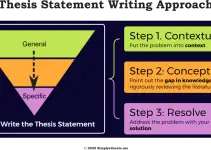Updated | September 22, 2025

Is ChatGPT bad for the environment? This article explores the issue. Read on to find out.
Table of Contents
Introduction
The widespread adoption of ChatGPT in our daily lives has become a common trend, with more and more people relying on this technology for various tasks. However, despite its convenience and utility, the extensive use of ChatGPT raises significant concerns about its environmental impact.
As we go deeper into the workings of ChatGPT, it becomes evident that the processes involved in powering this technology have a substantial carbon footprint. The servers and data centers that support ChatGPT operations consume vast amounts of energy, predominantly sourced from non-renewable fossil fuels. This reliance on energy-intensive infrastructure contributes to the emission of greenhouse gases, along with deforestation, exacerbating the already critical issue of climate change.
The sheer scale of data processing and storage necessary for ChatGPT to function efficiently further compounds its negative impact on the environment.
In light of these considerations, it is crucial to recognize the detrimental effects of our increasing dependence on ChatGPT technology.
Let’s look into it in more detail in the next sections.
Brief History of ChatGPT
ChatGPT, an advanced AI language model, has rapidly evolved over the years, with significant advancements in natural language processing and machine learning.
Developed by OpenAI, ChatGPT represents a milestone in AI technology, enabling human-like interactions and responses in various applications.
However, this progress comes at a cost to the environment. The development and deployment of ChatGPT necessitate substantial resources, primarily in the form of energy consumption.
Let’s look into the energy and water use of ChatGPT before discussing its environmental impact.
How much energy and water does ChatGPT use?
The computational power required to train and run ChatGPT models is immense, leading to high electricity demands. Data centers housing the servers that power ChatGPT operations consume vast amounts of energy, predominantly sourced from non-renewable fossil fuels. This reliance on energy-intensive infrastructure contributes significantly to the carbon footprint of ChatGPT.
Let’s go into the details on how much energy and water ChatGPT use.
Data Center & AI Infrastructure
The water cost of each ChatGPT query is only about 0.000085 gallons of water—less than 1/15 of a teaspoon (~0.32 mL), according to Sam Altman, the Chief Executive Office of Open AI. However, an earlier research by the Yale School of Environment on artificial intelligence energy emissions estimated that a session of 10–50 ChatGPT prompts consumes roughly 0.5 liters of water.
The wide variation in estimates stems from differences in the parameters and perspectives applied. As of now, there are no universally accepted standards for measuring the exact energy and resource requirements of large AI models like ChatGPT.

Related to this, Ana Pinheiro Privette of Center for Secure Water in the University of Illinois Urbana-Champaign, says that data centers use evaporative cooling systems, which can consume between 1–9 L of water per kWh of power used.
Data centers worldwide currently withdraw an estimated 560 billion liters of clean, fresh water each year for cooling purposes—a number expected to rise to 1.2 trillion liters annually by 2030 due to growing AI demand (Nicoletti, Mas, and Bass, 2025). Because these facilities require high-quality water, they often compete with local communities for limited freshwater resources in regions where large-scale data centers are built.
A 100 MW data center (typical hyperscale facility) can consume roughly 2 million liters per day—comparable to the water use of 6,500 households.
The continuous operation of ChatGPT along with other AI servers requires a constant and uninterrupted power supply. This perpetual need for electricity and water to supply the cooling towers of an increasing number of data centers puts pressure on the already burdened environmental resources.
The sheer scale of data processing and storage involved in ChatGPT’s functioning further exacerbates its environmental impact. As ChatGPT continues to be integrated into various aspects of our daily lives, from customer service chatbots to content generation tools, its environmental footprint grows.
The widespread adoption of this technology amplifies the strain on energy and water resources and intensifies carbon emissions, contributing to the global climate crisis.
Now, let’s shift into that discussion on the environmental impact of ChatGPT.
Is ChatGPT Bad for the Environment? 3 Major Impacts
There are three major environmental impact due to the operation of ChatGPT as well as other AI that sprouted after its launching. We’ll discuss how this affects the United States as the primary operator of AI then proceed to the global effects.
Environmental impact of ChatGPT in the United States
The U.S. hosts the majority of AI infrastructure, particularly the data centers of Microsoft Azure, Google Cloud, AWS, and OpenAI, so most training and early deployment of ChatGPT takes place in the U.S.
AI is a driver behind explosive data center growth, especially in states like: Iowa, Oregon, and Virginia (due to tax incentives and cooler climates). Data centers are also found in the southern regions of Arizona, Utah, and Nevada (cheaper land but high water stress).
1. Power Demand Will Double
The increasing number of data centers due to AI means that U.S. data center electricity demand could double by 2030.
2. Carbon Emissions
A recent UN/ITU report found that indirect carbon emissions—stemming from purchased electricity for data centers—jumped ~150% on average between 2020 and 2023 among the big companies Amazon, Microsoft, Alphabet (Google), and Meta (Reuters).
- Amazon saw the largest rise at 182%, driven by surging data center workloads
- Microsoft’s indirect emissions rose by 155%, tracked alongside its massive AI infrastructure expansion
- Meta (Facebook & Instagram) emissions increased by 145%
- Alphabet (Google) by 138%
3. Water Strain
In the U.S., AI data centers use freshwater for evaporative cooling, especially in dry states. One 100 MW data center can consume over 2 million liters per day, which equals the daily water use of 6,500 U.S. households.
Cities like Phoenix, Salt Lake City, and Las Vegas face real sustainability concerns.
Policy Response
U.S. government and tech firms are under increasing pressure to disclose AI-related emissions and water use. The Department of Energy and EPA are now assessing how AI affects grid stability and resource sustainability.
Global Environmental Impacts of ChatGPT & AI Models
1. Skyrocketing Energy Consumption
Global AI energy demand is skyrocketing due to growing use of models like ChatGPT, Copilot, Gemini, and Claude. According to the International Energy Agency (IEA), all data centers consumed 415 terawatt hours of electricity in 2024. This consumption accounts for 10–20% of energy use globally. This could grow to 49% by late 2025 (Milmo, 2025).
A single training run of GPT-4 is estimated to use 52–62 GWh—enough to power about 15,000 average U.S. homes for a year (Devera).

2. Carbon Emissions
Global training and inference of large models emit substantial CO₂:
- GPT-3: ~552 metric tons CO₂e (training)
- GPT-4-scale: Estimated 10,000–15,000 metric tons CO₂e
These emissions vary depending on electricity sources. AI data centers in regions with coal-based grids emit more CO₂ than those powered by renewables.
If usage continues at this pace, AI-related emissions could surpass entire countries’ footprints (e.g., Ireland, Portugal) in a few years.
3. Water Consumption
Globally, AI-related water withdrawals may hit 4.2–6.6 billion m³ annually by 2027. Answering your queries uses about 0.32 mL of water per prompt, but billions of queries daily means millions of liters/day are consumed, primarily for cooling.
Water is typically drawn from municipal or local supplies, stressing regions prone to drought or water scarcity.
Ways to Reduce the Impact of ChatGPT to the Environment
To mitigate the environmental impact of ChatGPT and work towards a more sustainable future for AI technologies, there are several practical ways to reduce its carbon footprint. By implementing these strategies, individuals and organizations can contribute to minimizing the negative effects of ChatGPT on the environment.
1. Prioritize energy efficiency
One effective approach to reducing the impact of ChatGPT on the environment is to prioritize energy efficiency. By optimizing the algorithms and processes used in training and operating ChatGPT models, developers can significantly decrease the energy consumption associated with this advanced AI technology.
Implementing energy-efficient practices not only reduces the carbon footprint of ChatGPT and other AI but also promotes responsible resource management in the realm of artificial intelligence. In the chip-manufacturing sector, next-gen chips can help achieve this through much higher performance per watt of electricity.
2. Transition towards renewable energy resources
Another crucial step in mitigating the environmental impact of ChatGPT is to transition towards renewable energy sources. By powering the data centers and servers that support ChatGPT operations with clean, renewable energy such as solar or wind power, the reliance on non-renewable fossil fuels can be minimized.
Big companies like AWS, Meta, Open AI, Microsoft’s Azure have already taken steps to target carbon-neutrality or carbon-negative goals in the next five years (Devera). This shift towards sustainable energy sources plays a vital role in reducing carbon emissions and fostering a more eco-friendly approach to AI development and deployment.
3. Promote responsible data management practices
Furthermore, promoting responsible data management practices can help lessen the environmental impact of ChatGPT. By optimizing data processing and storage techniques, developers can minimize the energy consumption required for the operation of ChatGPT models.
Implementing data compression algorithms, efficient data storage solutions, and data recycling practices can contribute to reducing the overall energy demand and carbon emissions associated with ChatGPT.
4. Raising awareness about the environmental consequences of ChatGPT
Additionally, raising awareness about the environmental consequences of AI technologies like ChatGPT is essential in driving positive change. Educating users, developers, and decision-makers about the carbon footprint of ChatGPT and the importance of sustainable practices in AI development can lead to increased adoption of eco-conscious strategies.
By fostering a culture of environmental responsibility within the AI community, stakeholders can collectively work towards mitigating the impact of ChatGPT on the environment.
By prioritizing energy efficiency, transitioning to renewable energy sources, optimizing data management practices, and raising awareness about environmental sustainability, it is possible to reduce the impact of ChatGPT on the environment.
Taking proactive steps to address the environmental challenges posed by advanced AI technologies is crucial in promoting a greener and more sustainable future for innovation in the digital age.
Conclusion
The environmental impact of ChatGPT is significant, contributing to carbon emissions, clean water consumption, and energy consumption. However, there are actionable steps that can be taken to mitigate these effects and promote a more sustainable approach to AI technology.
By prioritizing energy efficiency in the development and operation of ChatGPT models, optimizing data management practices, and transitioning to renewable energy sources, it is possible to reduce the carbon footprint of this advanced technology.
Additionally, implementing energy-efficient algorithms and processes can significantly decrease energy consumption, leading to a more eco-friendly operation.
Raising awareness about the environmental impact of AI technologies like ChatGPT is also essential. Educating users, developers, and decision-makers about the importance of sustainable practices in AI development can drive positive change and foster a culture of environmental responsibility within the AI community.
Most importantly, AI developers need to be more transparent about their resource use and impacts, such that collective effort will be made to mitigate negative impacts. After all, ChatGPT and similar technologies were created to serve human ends.
As we further go through the complexities of modern technology to serve human ends, it is imperative to remain mindful of the environmental consequences of our choices and strive towards a more sustainable future.
Reference
Nicoletti, L., M. Ma, and Bass, D. (2025, May 8). AI is draining water from areas that need it most. Bloomberg. Retrieved July 17, 2025, from https://www.bloomberg.com/graphics/2025-ai-impacts-data-centers-water-data/
FAQ: Is ChatGPT Bad for the Environment
Q1: How much energy does ChatGPT (and similar large AI models) use?
A1: Training large models is very energy intensive — a single large-scale training run can consume tens of gigawatt-hours. Ongoing inference (answering user queries) uses less per query but adds up at scale because billions of queries are served daily. Exact energy depends on hardware, optimization, and the electricity source.
Q2: How much water does a ChatGPT query use?
A2: Estimates vary. Public comments put the water per query at a tiny amount (≈0.32 mL), while some studies estimate higher values per session. Much larger water volumes are used indirectly for data-center cooling; evaporative cooling systems can consume 1–9 L of water per kWh in some designs.
Q3: Where do the carbon emissions from ChatGPT come from?
A3: Most emissions come from the electricity powering the data centers (training and inference). If that electricity is generated from fossil fuels, CO₂ emissions are higher. Manufacturing hardware and data-center construction also contribute to lifecycle emissions.
Q4: Does using ChatGPT increase water stress in local communities?
A4: It can. Hyperscale data centers often require high-quality water for cooling and are sometimes built in regions with scarce freshwater. In arid states or regions with high water stress, data-center water use may compete with local needs.
Q5: Are these environmental impacts concentrated in any countries or regions?
A5: Many major AI data centers and cloud infrastructure are located in the U.S., Europe, and parts of Asia. The U.S. hosts a significant share, and some U.S. states with favorable incentives or climates (e.g., Virginia, Oregon, Arizona) have seen rapid growth, which concentrates energy and water impacts locally.
Q6: How big is the carbon impact compared to other industries or countries?
A6: For now, AI emissions are a fraction of total global emissions, but rapid growth in compute and model size could make AI’s footprint comparable with medium-sized national footprints if unchecked. Emissions vary widely depending on energy sources used.
Q7: What can companies do to reduce ChatGPT’s environmental impact?
A7: Key measures include powering data centers with renewable energy, improving model and hardware energy efficiency, using more efficient cooling systems, optimizing data storage and processing, and reporting emissions and water use transparently.
Q8: What can individual users do to help reduce the impact?
A8: Use AI tools thoughtfully (avoid excessive or unnecessary prompts), prefer services that publish sustainability commitments, and support providers that use renewable energy and efficient infrastructure.
Q9: Are smaller models or on-device AI greener than large cloud models?
A9: Smaller, optimized models and on-device inference often consume less energy per task, but they may offer reduced capability. The overall environmental benefit depends on the tradeoff between capability, number of queries, and whether on-device operation avoids large cloud inference loads.
Q10: Is the data in the article exact or are there uncertainties?
A10: There are significant uncertainties and wide estimate ranges because there are not yet standardized, transparent accounting methods for AI energy and water use. Different studies use different assumptions, so figures should be interpreted cautiously.
Q11: What policy steps are being taken to address these impacts?
A11: Governments and regulators are starting to require better disclosures of energy use, emissions, and water consumption for data centers and AI systems. Agencies like energy departments and environmental regulators are evaluating grid impacts and sustainability risks.
Q12: Why is transparency from AI developers important?
A12: Transparency about energy use, cooling practices, and emissions allows policymakers, researchers, and the public to assess environmental impacts and prioritize effective mitigation strategies (renewables, efficiency, water-saving cooling, etc.).



